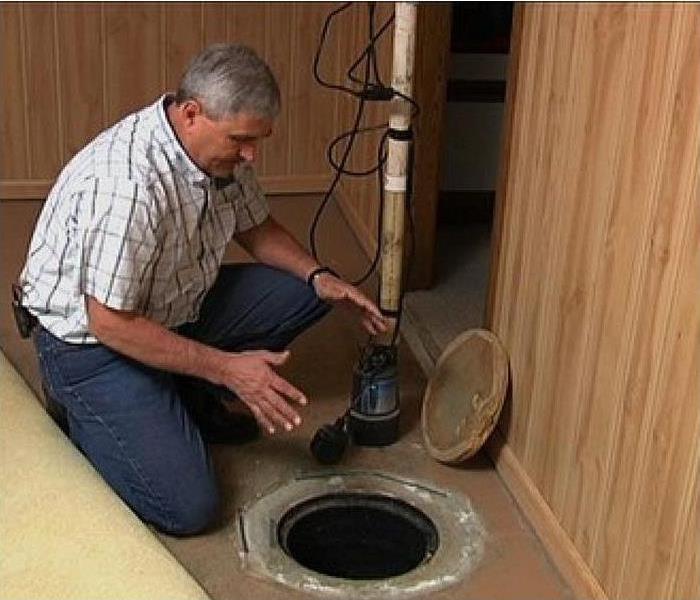Prevent Basement Flooding in your Rocky Hill Home with a Sump Pump
5/14/2021 (Permalink)
 Your Rocky Hill basement is vulnerable to floods, appliance leaks and burst pipes. A well-maintained sump pump can get the water out fast!
Your Rocky Hill basement is vulnerable to floods, appliance leaks and burst pipes. A well-maintained sump pump can get the water out fast!
Even if you’ve never had any water in your Rocky Hill basement from spring flooding, or a leaking clothes washer, or a failed water heater, or a frozen and burst pipe, you may want to consider installing a sump pump. Why? Two reasons: a previously dry basement doesn’t guarantee you’ll never get water down there, and if you do get water in your basement, the damage can be substantial and costly—but pumping the water out fast helps you minimize that damage.
What is a sump pump? It’s a simple pump that sits in your basement, typically in a pit (or sump) in the floor or above the floor. When the sump pump detects water, it kicks on and pumps the water outside your home.
Choosing a Sump Pump
You’ll have a few decisions to make when purchasing a sump pump.
- Choose a submersible pump if there’s enough room in your sump pit. You can cover a submersible pump with a lid, so it’s quieter and less debris gets into the pit
- Buy a pump with a core made of cast iron, not plastic—it will last longer
- Look for a no-screen intake design with an impellor that can handle solids up to ½-inch to reduce clogging
- Opt for a mechanical switch instead of a pressure switch, and a solid float
- Bonus: choose a pump with an alarm that will tell you when the water reaches a certain level
It’s a good idea to purchase a backup pump, especially if your basement is finished. Have it installed next to the primary pump, and if pump #1 fails, the back-up pump will kick in. Another option is to install a battery-powered backup pump, so that even if you lose power, you can keep pumping water from your basement for up to 48 hours.
Maintaining Your Sump Pump
Two to four times a year, head to the basement to check and clean your sump pump.
- Start by removing the lid on the pit and cleaning out any debris
- Check the electrical connections, outlet, circuit breaker and GFCI (if you have one)
- Make sure the pump is seated upright and isn’t tilted
- Check your manual and if the pump’s bearings require lubricating, do that
- Test the pump by pouring about 5 gallons of water into the pit. The sump pump should be triggered once the water level reaches 8 to 10 inches
- Finally, check for obstructions in the outlet pipe and filter screen, if your pump has that feature
We’re Here for You
The team at SERVPRO of Glastonbury/Wethersfield has specialized training and experience in water damage remediation, fire restoration services, natural disaster prevention, chemical cleanup, and natural disaster cleanup. Call SERVPRO of Glastonbury/Wethersfield (860.633.8791) any time.
When you have suffered a water or other disaster at your home or business, call SERVPRO of Glastonbury/Wethersfield today at 860.633.8791
Other Helpful Blog Posts
SERVPRO® publishes educational articles on how to protect your home or business from disasters and how to deal with mold, fire, water, sewage, storm and other damage.
SERVPRO of Glastonbury/Wethersfield
IICRC Certified
Noemi Garcia
Franchise Owner
Call 860.633.8791
Fax 860.216.2762
24-hour emergency service






 24/7 Emergency Service
24/7 Emergency Service